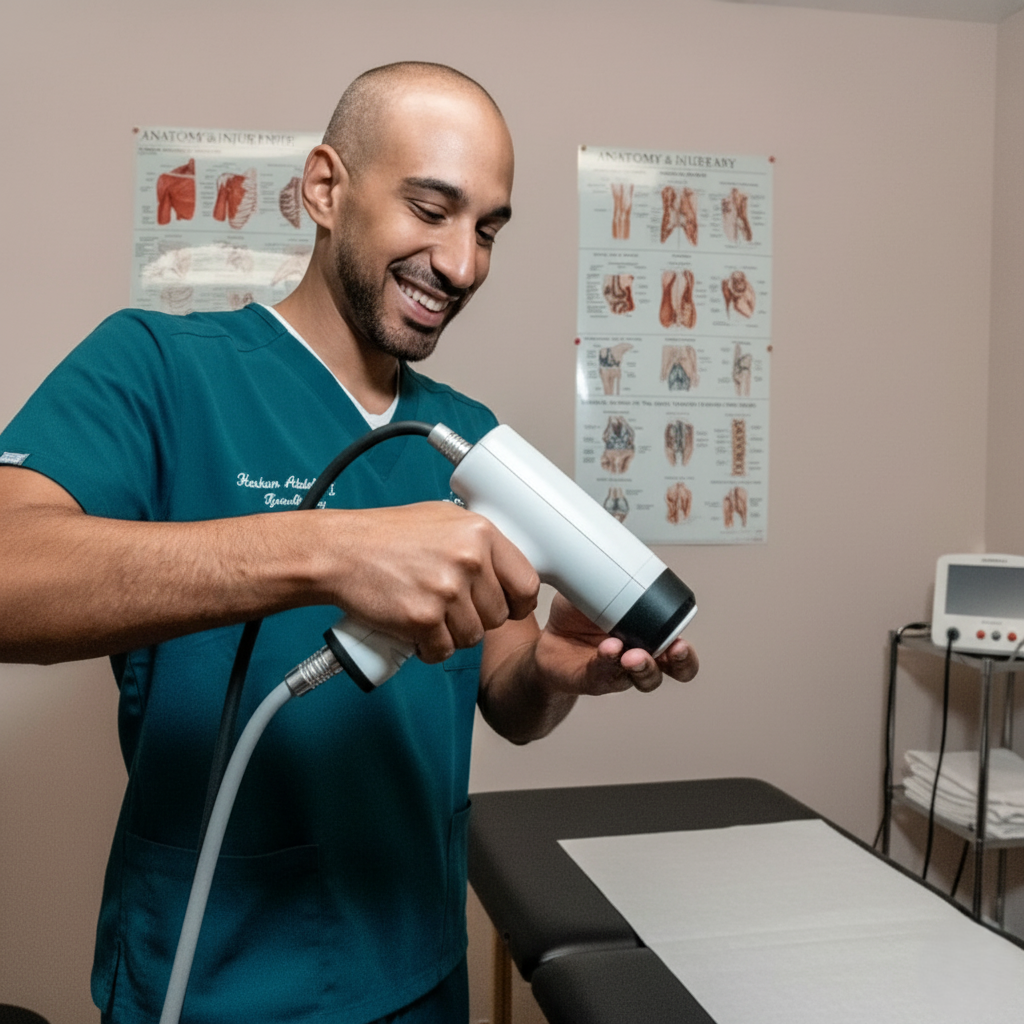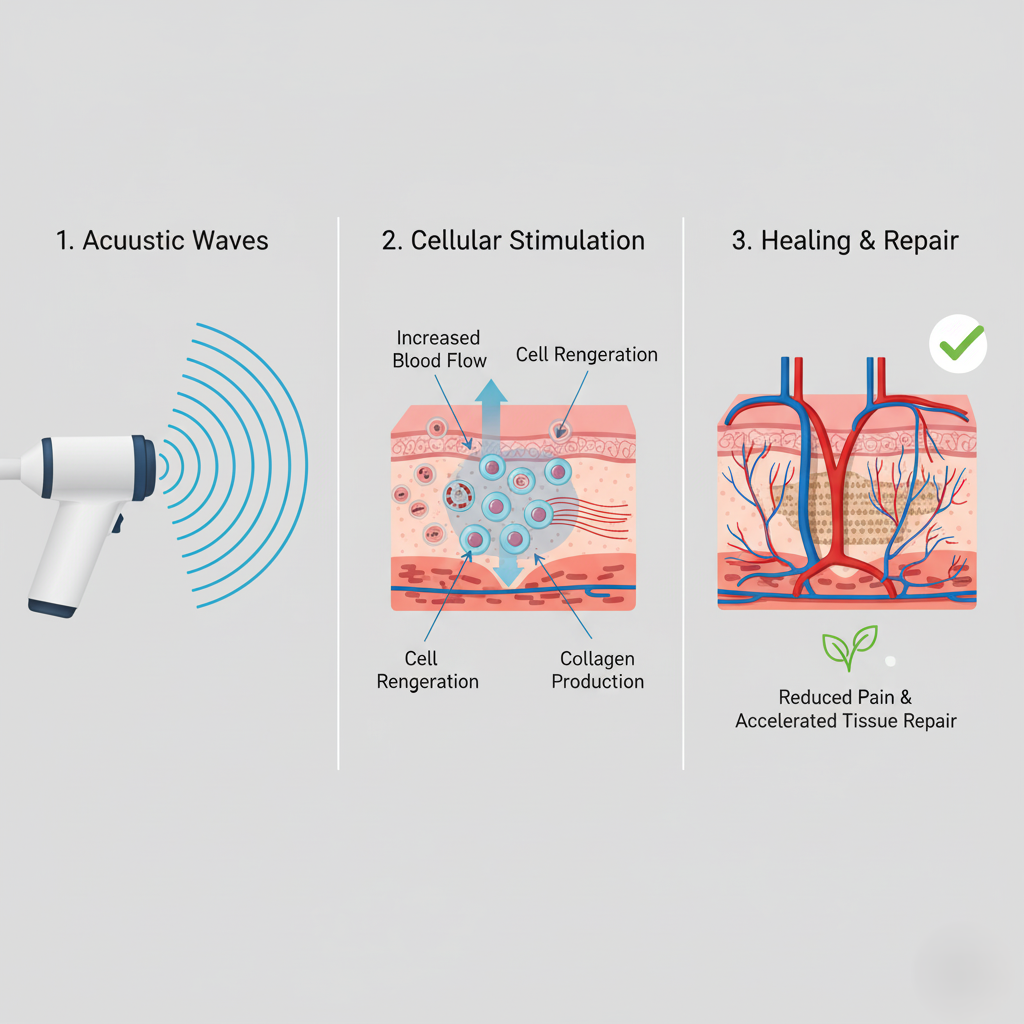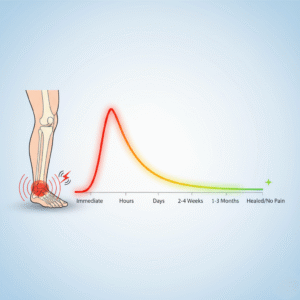When it comes to finding effective solutions for chronic pain or injuries, shockwave therapy has gained a lot of attention in recent years. But one of the most common questions people ask before booking their first session is: “Is shockwave therapy expensive?”
The short answer, it depends on several factors. While it may seem like a high upfront cost, shockwave therapy is often a cost-effective alternative to surgery or long-term medication use. Let’s explore what determines the cost, what you can expect from treatment, and why it might actually save you money and pain in the long run.

Understanding Shockwave Therapy
Shockwave therapy, or Extracorporeal Shockwave Therapy (ESWT), is a non-invasive medical treatment that uses acoustic sound waves to stimulate the body’s natural healing processes. These waves are directed into the affected tissues to promote blood flow, reduce inflammation, and accelerate cellular repair.
It’s widely used to treat musculoskeletal conditions, such as:
- Plantar fasciitis
- Tennis elbow (lateral epicondylitis)
- Calcific shoulder tendinitis
- Achilles tendinopathy
- Chronic back or neck pain
- Muscle tightness and scar tissue
Unlike medications that only mask pain or surgeries that require downtime, shockwave therapy targets the root cause of discomfort by promoting tissue regeneration. Most patients begin feeling relief after three to six sessions, though the exact number can vary depending on the condition.
How Much Does Shockwave Therapy Cost?
On average, shockwave therapy sessions cost between $75 and $250 per session in the United States. The total cost of treatment can range from $300 to $1,200, depending on how many sessions are required.
The cost is influenced by several key factors, including:
- Type of Shockwave Therapy:
There are two main types — radial and focused shockwave therapy. Focused shockwave therapy tends to be more precise and powerful, often resulting in faster results, but it’s also more expensive due to the advanced equipment involved. - Condition Being Treated:
Chronic or severe conditions might require additional sessions or higher energy levels, slightly increasing the total cost. - Clinic Location:
Prices vary depending on where you live. Clinics in major cities or specialized centers often charge more due to higher operational costs and demand. - Provider Expertise:
Experienced professionals or clinics with specialized certifications may charge premium rates for their advanced skills and precision. - Equipment Quality:
Not all devices are equal. Clinics that use the latest FDA-approved or medical-grade equipment may charge higher fees, but this often means more effective and safer treatment.
Are There Additional Costs?
In most cases, shockwave therapy doesn’t have any hidden or surprise costs. However, it’s good to ask your provider about:
- Consultation fees (if not included)
- Assessment or diagnostic exams before starting treatment
- Follow-up visits after completing the sessions
Many clinics offer package deals that reduce the per-session cost when you commit to multiple treatments upfront.
Is Shockwave Therapy Covered by Insurance?
Insurance coverage for shockwave therapy varies greatly. While some insurance providers consider it a medically necessary treatment for chronic pain or musculoskeletal disorders, others categorize it as experimental or elective.
Here are a few important steps to take:
- Contact your insurance provider: Ask if your plan covers ESWT or related therapies.
- Ask your clinic: Many clinics can help you verify coverage or provide documentation to submit a reimbursement claim.
- Use HSA/FSA funds: Even if insurance doesn’t cover it, most patients can pay for shockwave therapy using a Health Savings Account (HSA) or Flexible Spending Account (FSA).
If your insurance doesn’t cover it, don’t be discouraged; many patients find the treatment worth the out-of-pocket cost, given its long-term benefits.
Is Shockwave Therapy Worth the Cost?

When evaluating whether shockwave therapy is expensive, it’s essential to look beyond the price tag and consider the value it provides.
Here’s why many patients consider it a smart investment in their health:
1. Long-Term Pain Relief
Unlike temporary solutions such as pain medications or cortisone injections, shockwave therapy promotes true healing. By stimulating collagen production and increasing blood flow, it helps repair damaged tissue and provides lasting pain relief.
2. Non-Invasive Alternative to Surgery
Surgical procedures often come with high costs, hospital stays, anesthesia, and long recovery times. Shockwave therapy offers a non-surgical option that requires no downtime, letting you return to work or daily activities right away.
3. Minimal Side Effects
The treatment is safe, FDA-approved, and has very few side effects. Most patients only experience mild soreness for a day or two after treatment, far less disruptive than surgery or long-term drug use.
4. Fewer Appointments Over Time
While physical therapy can take months of weekly sessions, shockwave therapy typically requires only a few treatments for noticeable improvement, saving both time and money in the long run.
5. Improved Quality of Life
Reducing pain, increasing mobility, and enhancing recovery help patients regain control of their lifestyle, whether it’s returning to sports, exercising, or simply walking comfortably again.
Comparing Shockwave Therapy Costs to Other Treatments
To put the cost in perspective, let’s compare it with other pain management options:
| Treatment Type | Average Cost | Invasiveness | Recovery Time | Long-Term Effectiveness |
|---|---|---|---|---|
| Shockwave Therapy | $75–$250/session | Non-invasive | None | High |
| Cortisone Injections | $100–$300/injection | Minimally invasive | 1–2 days | Temporary relief |
| Surgery | $5,000–$15,000 | Invasive | Weeks–Months | Permanent but risky |
| Physical Therapy | $80–$150/session | Non-invasive | Ongoing | Moderate |
| Medications | $30–$100/month | Non-invasive | None | Temporary relief |
When viewed this way, shockwave therapy often delivers the best long-term results for the cost.
Finding a Qualified Provider
To ensure safety and effectiveness, it’s important to choose a qualified provider. Look for:
- Licensed or certified practitioners
- Clinics with FDA-approved or medical-grade devices
- Transparent pricing with no hidden fees
- Personalized treatment plans tailored to your condition
- Positive reviews and patient testimonials
During your consultation, don’t hesitate to ask how many sessions they recommend, what kind of results you can expect, and whether they offer package discounts.
The Bottom Line: Is Shockwave Therapy Expensive?
The cost of shockwave therapy depends on where you go, what condition you’re treating, and how many sessions you need. While it may seem pricey compared to a single medication refill, the long-term benefits make it a worthwhile investment for many people.
You’re not just paying for pain relief, you’re investing in:
- A faster recovery
- Reduced long-term costs from other treatments
- A non-invasive, drug-free approach
- Improved mobility and quality of life
Call to Action
Ultimately, shockwave therapy is an investment in lasting health and comfort, something that’s priceless when it comes to living pain-free. Contact us today!






